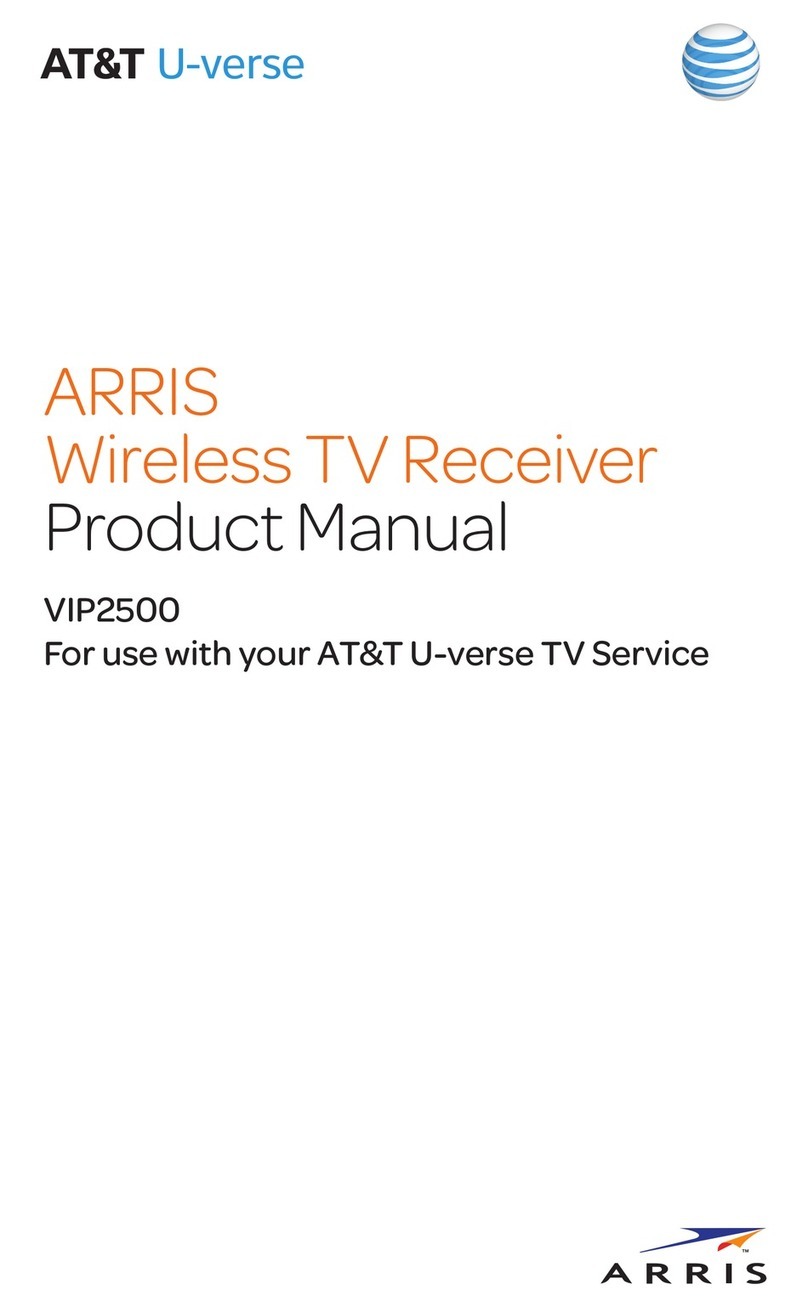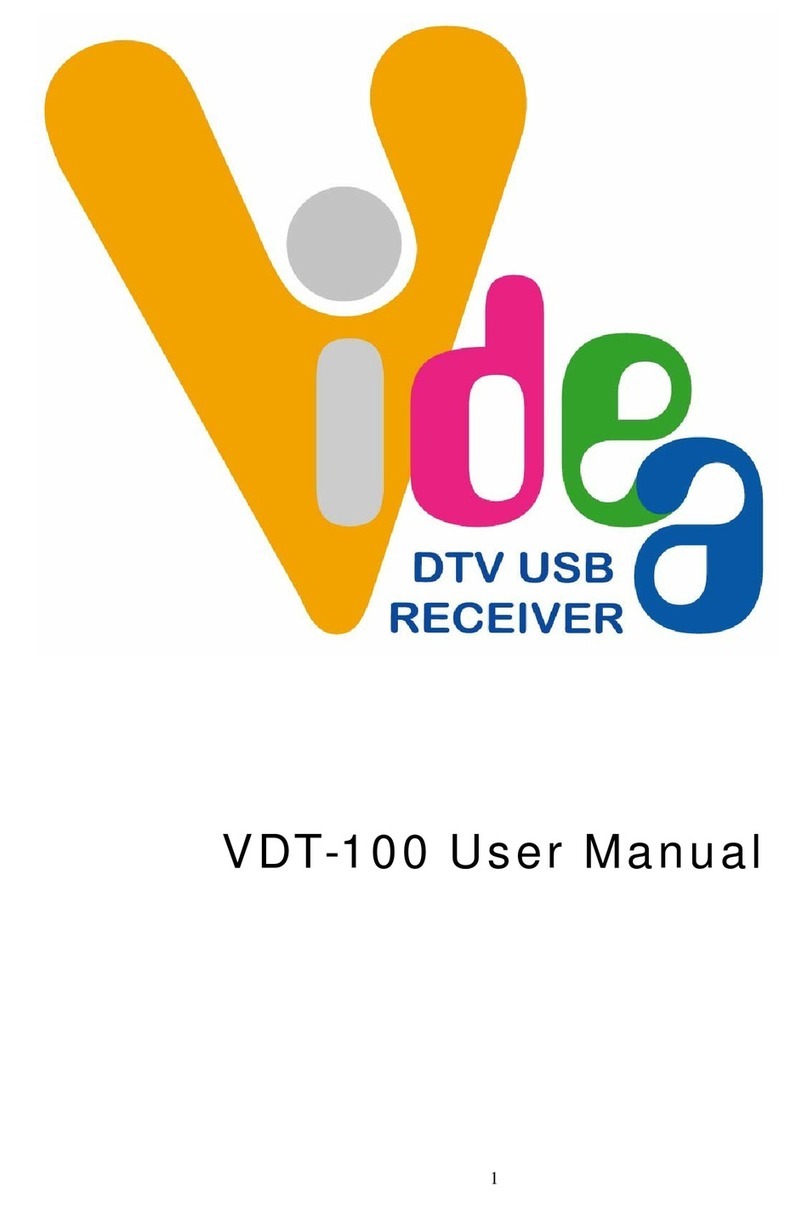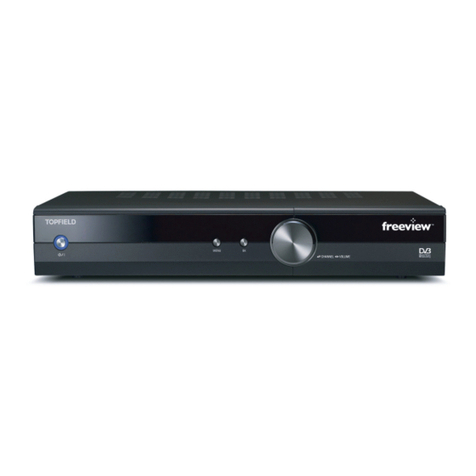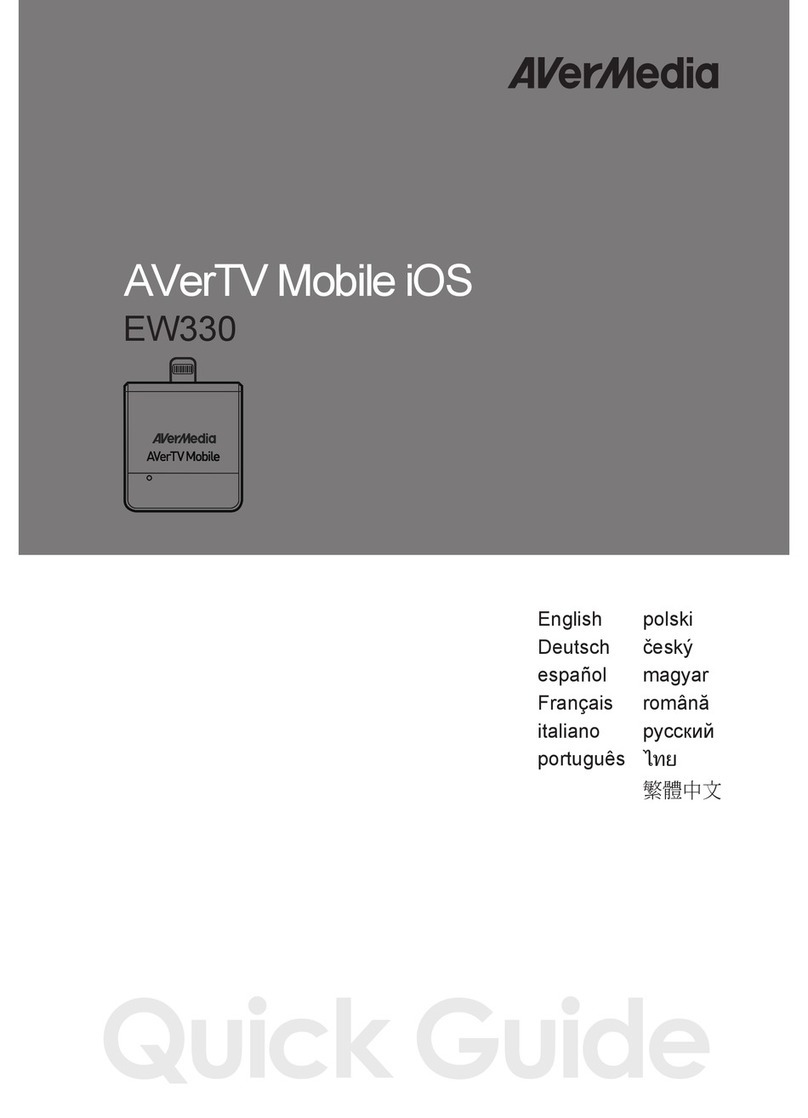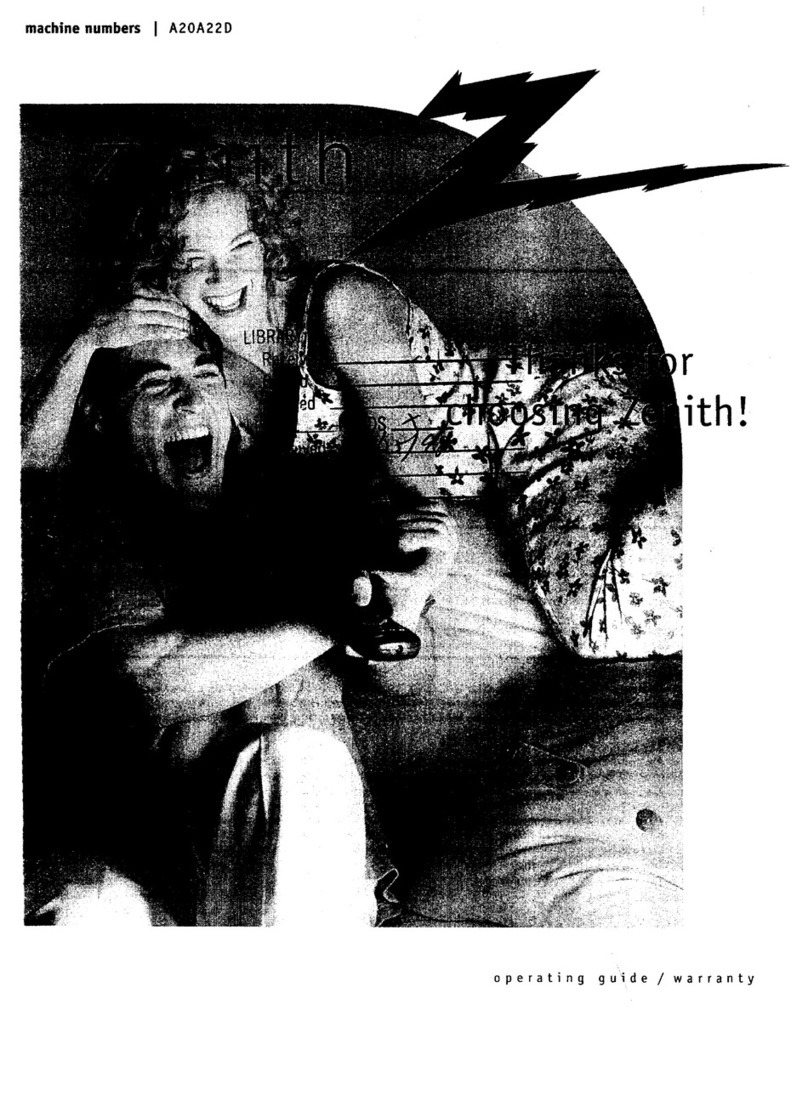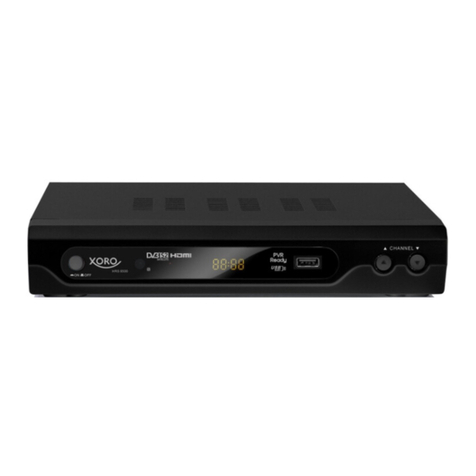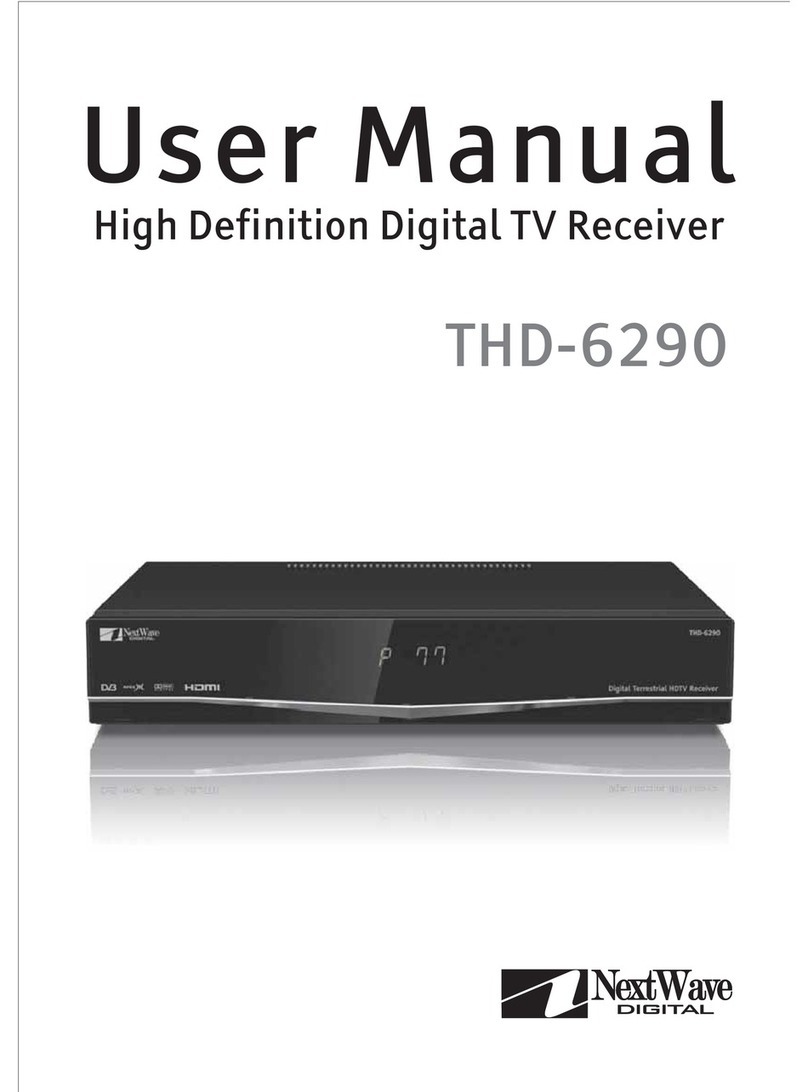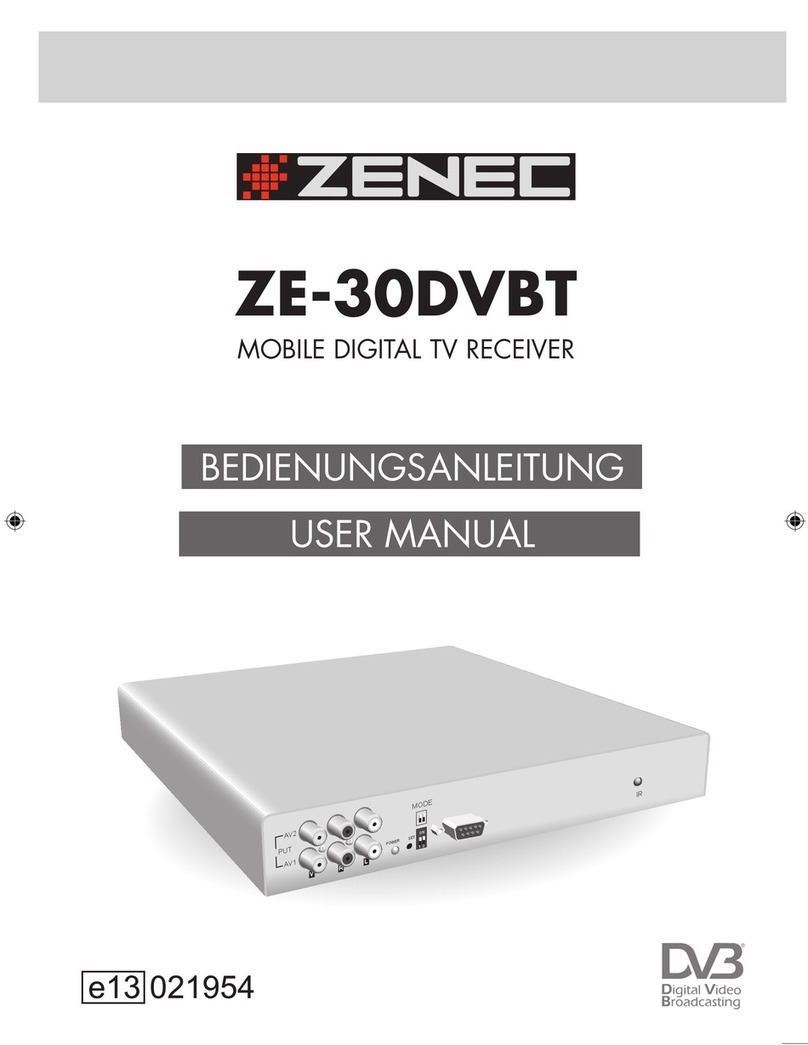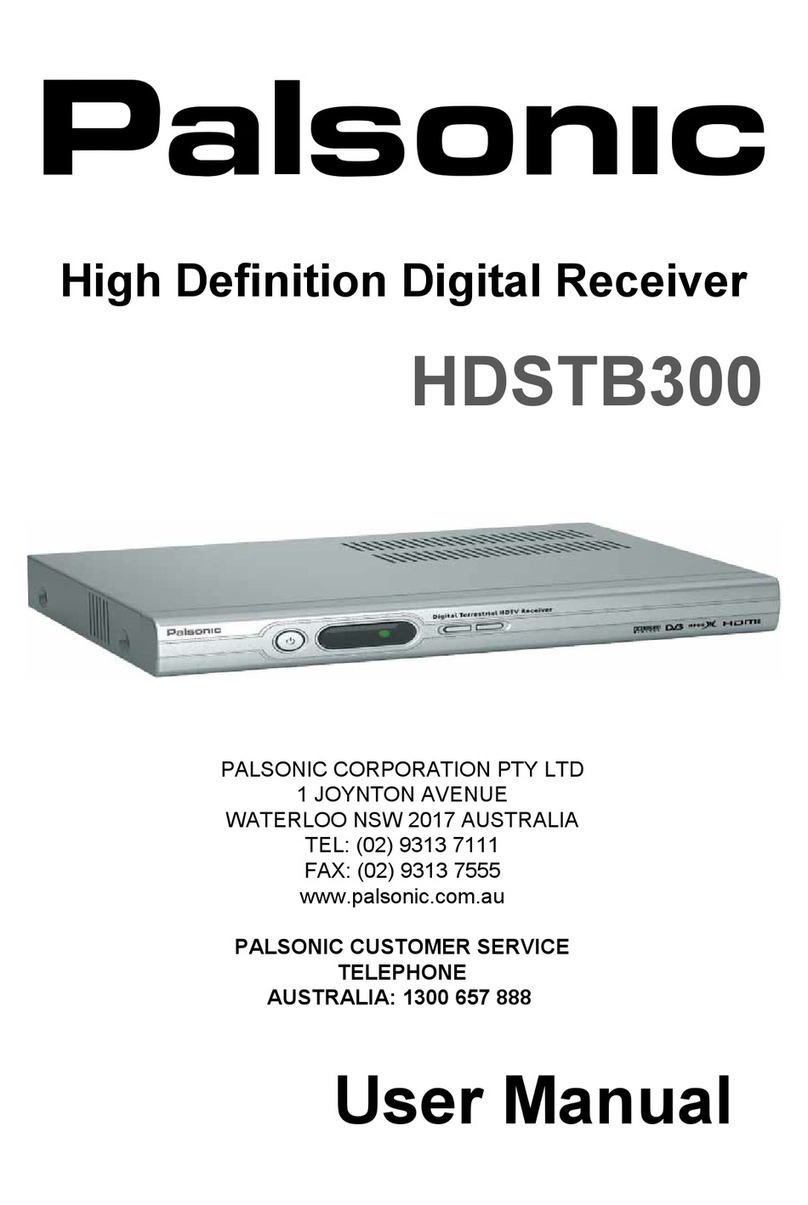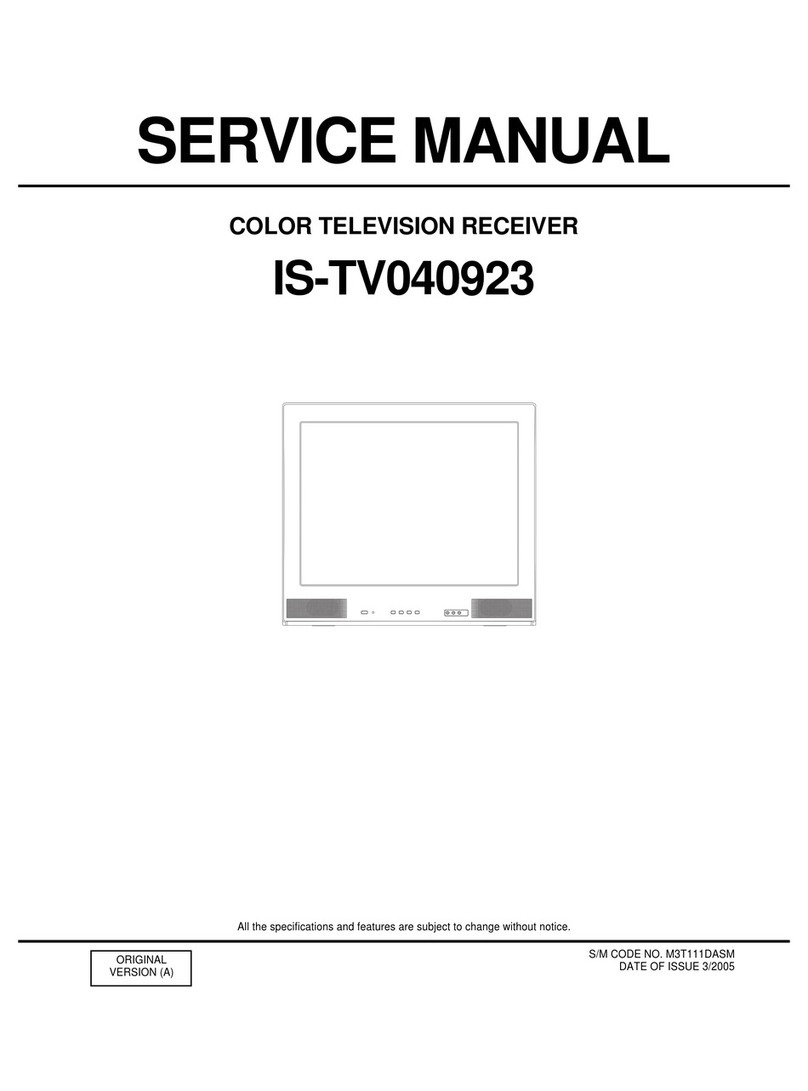Gigabit Sistems JP2pro_rev.S User manual

Solid-state HDTV RECORDER
JP2pro_rev.S
Instruction Manual
REV. 1.0
Gigabit Systems Inc.
WWW.gigabitsystems.com

FCC Compliance
This equipment has been tested and found to comply with the limits for a ClassA digital
device, pursuant to Part 15 of the FCC Rules. These limits are designed to provide
reasonable protection against harmful interference when the equipment is operated in a
commercial environment.
This equipment generates, uses, and can radiate radio frequency energy and, if not
installed and used in accordance with the instruction manual, may cause harmful
interference to radio communications.
Operation of this equipment in a residential area is likely to cause harmful interference
in which case the user will be required to correct the interference at his own expense.
Safety Precautions
To use this product safely, review the following safety precautions.
To avoid potential hazards, use this product only as specified.
Mark for Precautions
Mark and its term labeled on the machine is as follows:
Shows a caution, warning and danger.
Shows high voltage. Don’t touch in this area.
1

Injury Precautions
Use Proper Power Cord
To avoid fire hazard, only use the power code specified for this product.
Avoid Electric Overload
To avoid electric shock or fire hazard, do not apply a voltage to a terminal that is
outside the range specified for the terminal.
Ground the Product
This product is grounded through the grounding conductor of the power code.
To avoid electric shock, the grounding conductor must be connected to earth
ground. Before connecting the input or output cables, ensure that the product is
properly grounded.
Do Not Operate Without Covers.
To avoid electric shock or fire hazard, do not operate this product with covers or
panels removed.
Do Not Operate in Wet Conditions.
To avoid electric shock, do not operate this product in wet or damp conditions.
The apparatus shall not be exposed to dripping or splashing and that no objects
filled with liquids, such as vases, shall be placed on the apparatus.
Do Not Operate in an Explosive Atmosphere.
To avoid injury or fire hazard, do not operate this product in an explosive
atmosphere.
2

Product Damage Precautions
Use proper power source.
Do not operate this product from a power source that applies more than the
voltage specified. The specified voltage of this product is within 90-264 VAC,
50-60Hz.
Provide Power Ventilation.
To prevent product overheating, provide proper ventilation.
Prevent Impact
Prevent an impact during transportation. Do not move this product during
operation.
Do Not Operate With Suspected Failures.
If you suspect there is damage to this product, have it inspected by qualified
service personnel.
Repair and Maintenance
Only qualified service personnel should perform repairs and maintenances.
Contact the sales office in those cases.
Recommended Replacement Period.
The following parts of this product are recommended to replace within the
specified term. Lifetime of parts is influenced by an environment, a frequency of
use and a preservation condition.
(1) Cooling fans: Two years..
(2) Power supply unit: Five years.
3

INDEX
PREFACE......................................................................................................................................6
Outline of the JP2pro_rev.S.......................................................................................................6
Initial inspection.........................................................................................................................6
Control means of the JP2pro_rev.S...........................................................................................7
Important notice for the Raid Configuration...............................................................................7
About recording time.................................................................................................................. 8
1. INSTALLATION.........................................................................................................................9
1-1. Confirmation of Environment.............................................................................................. 9
1-2. Assurance of Mains Voltage...............................................................................................9
1-3. Connection of Power Cable and Power ON.......................................................................9
1-4. Power OFF.......................................................................................................................10
2. OPERATION ........................................................................................................................... 11
2-1. Front Panel....................................................................................................................... 11
2-2. Rear Panel........................................................................................................................13
2-2-1. Power Supply Part.....................................................................................................13
2-2-2. Signal Input Part........................................................................................................14
2-2-3. Signal Output Part .....................................................................................................16
2-2-4. Remote Interface Part................................................................................................17
3. REMOTE CONTROL..............................................................................................................18
3-1. RS-422 Control.................................................................................................................18
3-1-1. Outline .......................................................................................................................18
3-1-2. Architecture of the serial transmission data...............................................................18
3-1-3. Command Format......................................................................................................18
3-1-4. Connector PinAssignment........................................................................................20
3-1-5. Communication Protocol............................................................................................21
4-1-6. RS-422A Command List............................................................................................22
3-2. RS-232C Control..............................................................................................................28
3-2-1. Outline .......................................................................................................................28
3-2-2. Architecture of the serial transmission data...............................................................28
3-2-3. Connector PinAssignment........................................................................................28
3-2-4. Transmission Protocol and Commands.....................................................................28
3-3. GPI Control.......................................................................................................................29
3-3-1. Outline .......................................................................................................................29
3-3-2. Connector PinAssignment........................................................................................29
3-3-3. Commands ................................................................................................................29
4

4. Synchronous Record/Play....................................................................................................30
4-2Needed Condition........................................................................................................30
4-3 operation............................................................................................................................30
4-4Connection in Record..................................................................................................31
4-5Connection in Playback...............................................................................................31
5. Edit operation ........................................................................................................................32
6. Exchange the SSD Magazine ...............................................................................................33
6-1 Open the Magazine lid.......................................................................................................33
6-2 Pulling out the Magazine...................................................................................................34
6-3 Re-insert the SSD Magazine.............................................................................................34
7. Maintenance...........................................................................................................................35
7-1 Cleaning of the air filter..................................................................................................35
7-2When warning LED is lit..............................................................................................35
7-3If JP2pro_rev.S is fail...................................................................................................35
8. Character display on the monitor........................................................................................ 36
9_1 Display contents ...............................................................................................................36
8_2 Error message..................................................................................................................37
9. JP2pro_rev.S Specifications................................................................................................39
5

PREFACE
Outline of the JP2pro_rev.S
JP2pro_rev.S is a professional recorder aiming to record and reproduce
the studio quality HDTV pictures for very long hours. This product is using
the JPEG2000 compression technology, and easy replaceable SSD (Solid
State Drive) Magazine.
Features ◆ Very high quality compression by the JPEG2000 standard. (Inc.
reversible Lossless)
◆ Very log recording time of studio quality HDTV content.
◆ Easy operation of the Intermittent (Time-laps) recording.
◆ Overall JPEG2000 compression/de-compression monitoring.
◆ HD-SDI input/output.
◆ Multi-format HDTV standard (4:2:2 10bits)
◆ Embedded AUDIO 8 channels.
◆ AES/EBU AUDIO 4 channels.
◆ TIME CODE input/output.
◆ Character insertion.
◆ Remote control with RS-422, RS232C, GPI or Ethernet.
◆ GEN-LOCK to external reference sync.
◆ VANC meta data
◆ Internal test signal generation.
◆ Lossless compression mode (OPTION).
◆ RAID-1 (Mirroring) configuration.
◆ Up to 8 partitions
◆ Simultaneous record/play
Initial inspection.
Confirm the contents and damages of this product before initial use.
Standard Accessories
Instruction Manual 1
Power cable 1
6

Control means of the JP2pro_rev.S
The following control means are recommended to perform all of the JP2pro_rev.S
functions.
(1) Front control panel option
(2) Dedicated RS-422 remote controller option, “SYNCHRO-CONT 2000”
(3) Control utility software “JP2pro-controller” for Ethernet option,
You can use commercially available editors (e.g. BVE-9100) or slow-motion controllers,
but note that most of such controllers are only adapting the VTR commands, so some
features needing the Disk Protocol are not possible.
Important notice for the Raid Configuration
You can choose the Raid-0 (striping) or the Raid-1 (mirroring) disk configuration. Note
that the actual recording capacity and the bandwidth of the hard disk drive decreases by
1/3 when using the RAID-1, so there are some cautions described below.
(1) Maximum recording time in RAID-1 configuration is 1/3 of the RAID-0.
(2) You cannot use the Lossless mode with the RAID-1.
(3) Normally, the simultaneous record/play operation is possible with the RAID-0 and
the lossy compression mode. Only the LP2 mode can use with the RAID-1.
Capability of simultaneous record/play
RAID LOSSLESS HQ LP1 LP2
RAID-0 NO YES YES YES
RAID-1 NO NO NO YES
7

About recording time
JP2pro_rev.S adopts constant quality (Variable Bit Rate) compression method. The
total recording time varies depending on the following factors.
(1) Capacity of the SSD Magazine.
(2) Raid configuration: The recording time of RAID-1 is 1/3 of the RAID-0.
(3) Quality mode: Lossless, High quality (HQ), Long play 1(LP1) or Long play 2(LP2).
(4) Active pixel number and bit depth
(5) Picture complexity
Table below shows the relationship between the average recording time and the picture
quality when recording relatively busy (complex) HDTV signal.
Recording TimeCompression
Mode Picture Quality 768 GB SSD 1,536 GB SSD
LOSSLESS Uncompressed Approx. 2.8H Approx. 5.6H
HQ Visually lossless
Approx. 8.8H Approx. 17.6H
LP1 HD-D5 class
Approx. 11.2H Approx. 22.4H
LP2 HDCAM class
Approx. 20H Approx. 40H
8

1. INSTALLATION
Review the “Safety precautions” of this manual before installation of this product.
1-1. Confirmation of Environment
This product operates properly within the temperature range of +0-45℃and the
humidity range of 10-90% (Non-condensing). If the temperature of this product is out of
this range due to a transportation or preservation, do not power on until the temperature
reaches the specified range.
To prevent an over-heat, do not disturb the airflow of this product. Keep a certain space
open, at least 5 cm on the front and the rear of this product.
1-2. Assurance of Mains Voltage
Assure that the mains AC voltage to this product is within the range of 90-264V 50/60
Hz.
1-3. Connection of Power Cable and Power ON
The power cable must be connected properly to the AC IN connector on the rear panel.
Switch on the BREAKER on the rear panel (“1” of 1/0 indication shows ON state).
Push the POWER SWITCH on the front panel for more than 1 second.
All fans are rotated, and the system comes into Setup routine. All LEDs are lit during the
Setup routine.After completion of the Setup routine, most of the LEDs go out and come
into a normal state. The color of the POWER SWITCH lights in orange and the system
is ready to operate.
9

1-4. Power OFF
Push the POWER SWITCH on the front panel more than two second for shutting down
the power. Do not turn the BREAKER on the rear panel off, until the illumination of the
POWER SWITCH turns off.
(NOTE) In the power off process, all the set-ups done by the operator are stored in the
non-volatile RAM. These set-ups are reattributed when power is on again.
BREAKER
A
C IN
POWER SWITCH
10

2. OPERATION
2-1. Front Panel
Names and functions of the Front Panel switch and LED indicators are as follows:
➁
➂
➃➀
➀POWER SWITCH
This switch turns on or turns off the system. Color of this switch is red in the
“Standby” mode, and orange when the system is ready to operate. In case of
shut down, do not turn the BREAKER on the rear panel off, until the
illumination of the POWER SWITCH turns off.
In the power off process, all the set-ups done by the operator are stored in the
non-volatile RAM. These set-ups are reattributed when power is on again.
➁WARNING INDICATOR
•HD INPUT :Lit red when HD-SDI VIDEO signal is not connected to the
HD-SDI IN or the connected signal is abnormal.
•DC POWER :Lit red when internal +3.3VDC or +5VDC is out of the
specified voltage range.
•FAN : Lit red when the cooling fans come to a stop.
➂HDD INDICATOR
There are three indicators, HDD1, 2 and 3. Blinked orange when the Disks are
in write operation (RECORD). Blinked green when the Disks are in read
operation (PLAY SLOW etc). When one of the Disks is fail, the corresponding
indicator stops blinking and keeps to light red
11

➃EXT INDICATOR
Lit green when this recorder synchronizes to the external reference signal
while one of the following GEN-LOCK modes are selected:
•EXT REF
•VIDEO INPUT
•AUTO
Lit amber at the following cases:
・ External Reference signal is not connected when the EXT mode is
selected.
・ Input Video signal is not connected when the INPUT VIDEO mode is
selected.
・ Both External Reference signal and Input video signals are not connected
when the AUTO mode is selected.
・ When INTERNAL mode is selected.
12

2-2. Rear Panel
Names and functions of parts, connectors and switches on the rear panel are as
follows:
2-2-1. Power Supply Part
➂
➁➀
➀Cooling Fan
This fan starts to rotate when the BREAKER on the rear panel and the
POWER SWITCH on the front panel are activated. If this fan is stopped by any
reason, the FAN warning LED on the front panel turns on red.
➁Mains Connector(AC IN)
Connects AC cable. Please use specified power cable to connect AC power.
The voltage range is within 90-264V, 50/60Hz.
➂Power Breaker/SW
This is a Non-fuse Breaker/Switch to protect from over current. The “1”
indicates ON position and the “0” indicates OFF position.
13

2-2-2. Signal Input Part
➈
➇
➅
➆
➃
➄
➂
➀
➁
➀HD-SDI VIDEO IN
This coaxial connector is the HD-SDI VIDEO INPUT.
➁THRU OUT
This coaxial connector is the HD-SDI ACTIVE THROUGH OUTPUT.
Equivalent HD-SDI INPUT signal can be output, to feed the INPUT signal to
the other equipments.
➂EXT REF IN
This coaxial connector is the EXTERNAL REFERENCE INPUT. Tri-level
HDTV sync or BB can be connected as a GEN-LOCK source.
➃THRU OUT
This coaxial connector is the THROUGH OUTPUT of the EXT REF IN. This is
not the active through. The 75Ωtermination switch should be off when using
this connector to feed the EXT REF signal to the other equipment.
➄75ΩTERMINATION SWITCH
This switch is the 75ΩTERMINATION SWITCH for the EXT REF IN. 75Ω
resister is inserted between the signal line and the GRD when this switch is
ON. This switch should be OFF when connecting the coaxial cable to the
THRU OUT connector.
14

➅A1/A2 IN
This coaxial connector is the Ch1/Ch2 INPUT for AES3 AUDIO. The
impedance is 75Ω. If the audio cable has a XLR connector, the conversion
connector should be used.
➆A3/A4 IN
This coaxial connector is the Ch3/Ch4 INPUT for AES3 AUDIO. The
impedance is 75Ω. If the audio cable has a XLR connector, the conversion
connector should be used.
➇TC IN
This coaxial connector is the TIME CODE INPUT for connecting the external
time code. The impedance is 75Ω. If the audio cable has a XLR connector, the
conversion connector should be used.
➈GPI IN/OUT
This D-SUB 15-pin female connector is used for a parallel remote.
15

2-2-3. Signal Output Part
➃
➈
➇
➄➅
➆
➀
➁
➂
➀HD-SDI VIDEO OUT 1
This coaxial connector is the HD-SDI VIDEO OUT 1.
➁HD-SDI VIDEO OUT 2
This coaxial connector is the HD-SDI VIDEO OUT 2.
➂HD-SDI VIDEO OUT 3
This coaxial connector is the HD-SDI VIDEO OUT 3.
➃HD-SDI MONI OUT 1
This coaxial connector is the HD-SDI MONITOR OUT 1. Character information
can be inserted on this output.
➄HD-SDI MONI OUT 2
This coaxial connector is the HD-SDI MONITOR OUT 2. Character information
can be inserted on this output.
➅HD-SDI MONI OUT 3
This coaxial connector is the HD-SDI MONITOR OUT 3. Character information
can be inserted on this output.
➆A1/A2 OUT
This coaxial connector is the Ch1/Ch2 OUTPUT for AES3 AUDIO. The
impedance is 75Ω. If the audio cable has a XLR connector, the conversion
connector should be used.
16

➇A3/A4 OUT
This coaxial connector is the Ch3/Ch4 OUTPUT for AES3 AUDIO. The
impedance is 75Ω. If the audio cable has a XLR connector, the conversion
connector should be used.
➈TC OUT
This coaxial connector is the TIME CODE OUTPUT. The impedance is 75Ω. If
the audio cable has a XLR connector, the conversion connector should be
used.
2-2-4. Remote Interface Part
➁
➂
➀
➀ETHERNET Connector
This RJ-45 connector is the 10/100 Base-T Ethernet connector. Remote
control is possible by using the dedicated GUI. The Ethernet (10/100Base-T)
is an Option.
➁RS-422 Connector
This D-Sub 9-pin female connector is for the RS-422. Remote control by
editors or slow motion controllers is possible by using RS-422 protocol.
➂RS-232C/GPI Connector
This D-Sub 9-pin female connector is for the RS-232C. This is used for the
service purpose usually. But remote control from external PC or equivalent
controller is also possible by using the RS-232C protocol.
17

3. REMOTE CONTROL
3-1. RS-422 Control
3-1-1. Outline
JP2pro_rev.S has a D-SUB 9-pin female connector on the rear panel that conforms to
EIA RS-422 Serial Remote Control Protocol. Most of controllers with the same control
protocol can remotely control this product. The following description explains the
contents of the serial protocol and the serial transmission sequence.
3-1-2. Architecture of the serial transmission data
・ 4-wire-transmission system.
・ Asynchronous bit-serial word-serial data transmission.
・ Data structure: 1 Start bit+8 Data bits+1 Parity bit+1 Stop bit
Start
bit
D0
(LSB)
D1 D2 D3 D4 D5 D6 D7
(MSB)
Parity
(Odd)
Space
Mark
(Note 1) Odd Parity: The sum of the D0+D1+---D7 and Parity bit is an odd number.
(Note 2) Mark B>A; (Voltage on line B is higher than that on LineA)
Space A>B (Voltage on lineA is higher than that on Line B)
3-1-3. Command Format
Communication between control systems and this product uses the following command
telegram format:
CMD 1/Data count, CMD 2, and data checksum (CHECKSUM).
If Data count is zero, no data is transmitted. If it is not zero, the data corresponding to
the existing values are inserted between CMD2 and CHECKSUM.
Bit
4-7
Bit
0-3
CMD 1 Data
count
CMD 2 DATA 1 -------- DATA N
N=15max
CHECKSUM
18

・ CMD 1: CMD 1 assigns the command to the following main function groups that
serve to define the function, and the transfer direction of the data words that
follows.
CMD 1 Function Transfer Direction
Controller---Recorder
0 System control
1 System control-Return message
2 Recorder control
4 Setup and selection control
8 Data request
7 Data request-Return message
・ Data count: Defines the number of data words that are inserted after CMD2
(0x0-0xF).
・ CMD 2: Is the specific command to the recorder or the command return
message from the recorder, respectively.
・ DATA: The number of data words and their contents are defined by the CMD2
command.
・ CHECKSUM: The sum of the data (D0-D7) contained in each data word, from
CDM 1/DATA COUNT to the last data word before the checksum.
19
Table of contents

